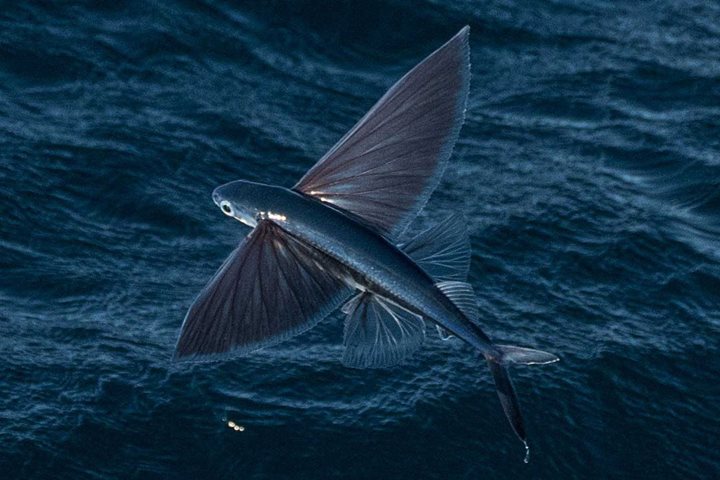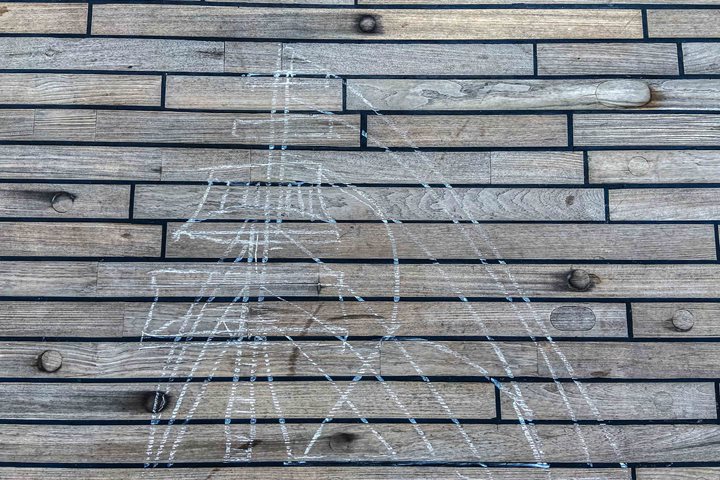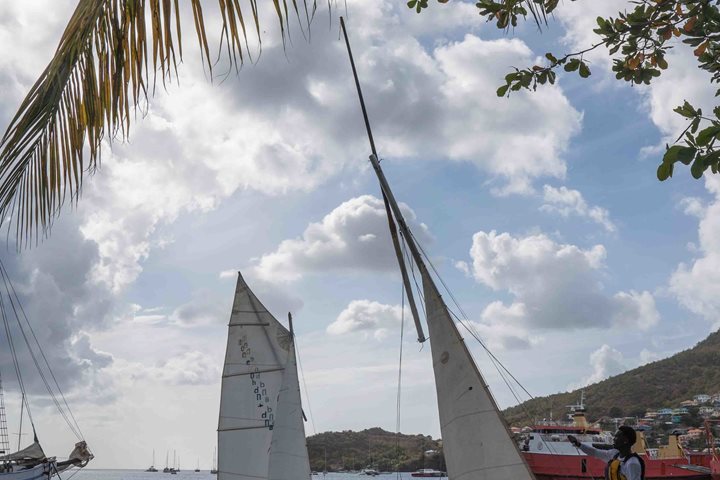We motored into Prince Rupert Bay in the island of Dominica at 6:50 a.m. shortly after sunrise and docked at 7:18 a.m. The day was unseasonably warm at 29°C.
Columbus, who saw the island first on a Sunday, called it “Dominica” for the Lord’s Day, while the native Kalinago Indians called it Waitikubuli, or “the lady her body is so long.” We boarded minivans en route to the rainforest and passed through the sleepy village of Portsmouth, the second city on the island with a population of some 7,000. As it was Sunday morning, all was quiet. The churches were full. The inhabitants are quite religious and faithfully attend church services.
We took an hour’s drive up to the heights of Morne Diabolotin—at 4,775 feet the tallest mountain on the island and the second tallest mountain in the Antilles. The island in its wettest parts receives upwards of 400 inches of rain a year. In the time before Hurricane Maria we would have been in a dark, cool rain forest; now because of the extensive damage to the vegetation caused by 200-mile-per-hour winds, the sun penetrated the canopy all the way to the forest floor.
Despite the savagery of the hurricane we saw a wonderful variety of plants. We saw an enormous number of trees which are called by their Creole names: the massive gommier tree, the kwe kew wouge (the red Kwe Kwe), the Bwa Bande (the hard wood), the Bwa pistole blan (the white pistol tree), the Bwa kaka (the “poop” tree), and the zel mouche (the fly’s wings). Flowers—hibiscus, anthurium, orchids, poinsettias, croton, and morning glory—were everywhere as well as fruits like mangoes, papayas, bananas, oranges, grapefruits, avocados, coffee, and cocoa trees. We saw bullfinches, purple-throated Caribbean hummingbirds, and my group was especially lucky as we spotted at least two of the Jaco, or the red-necked Amazon, which is endemic to Dominica.
After our excursion to the rainforest and a scrumptious lunch of fresh grilled Wahoo, we visited the 18th-century British fort, Fort Shirley. I gave a brief overview of Cabrits point and Fort Shirley: the massive fort, spanning most of the 200 acres of the Cabrits headland, was begun in 1774 and finally completed by 1820 and built entirely by local slaves. Though the fort’s canons could sweep the entire area in front of the town of Portsmouth, it never saw action and existed principally as a deterrent to protect the Royal Navy at anchor in Prince Rupert Bay.
After a series of treaties, the Fort was abandoned in 1852 and lay derelict, covered by strangler figs and the jungle until a good friend of mine, Dr. Lennox Honeychurch, a native of Dominica, undertook restoration beginning in 1982. It has only been possible to recover a small part of the original, but Lennox is still working on the restoration and has accomplished miracles.
After our visit to the fort, some of us jumped into the inviting sea alongside Sea Cloud for some snorkeling. A profusion of fish of all sorts was seen, despite the stiff current.
Dinner was served on the Lido Deck under the stars in this wonderfully tranquil and beautiful island.









